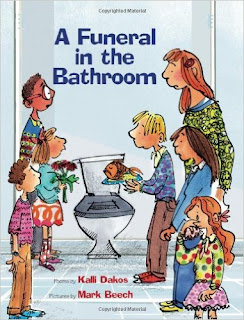 |
| Image retrieved from www.amazon.com |
Bibliography:
Alexander, Kwame. The Crossover. New York: Houghton Mifflin Harcourt Publishing Company, 2014. ISBN 9780544107717
Review and Critical Analysis:
“The Crossover” by Kwame Alexander is a story about family and brothers. Two almost 13 year old brothers, Josh (also known ask Filthy McNasty for his mad basketball skills) and Jordan, or JB, are unstoppable on the basketball court. Josh and JB are identical twins, “Two basketball goals at opposite ends of the court.” The only way to tell them apart is that Josh, the narrator of this novel in verse, is the one with long twisted hair in locks. Their dad is a former European league basketball player who teaches them everything he knows about basketball. Their mother is an assistant principal at their junior high school. In the beginning of the book, Josh says Basketball Rule #1 is “In this game of life / your family is the court / and the ball is your heart. / No matter how good you are, / no matter how down you get, / always leave / your heart / on the court.” His family is his life.
The focus of this novel is on Josh and JB’s relationship and how it changes when faced with challenges in basketball and in life. When JB gets his first girlfriend, Josh is terribly jealous that he’s spending way more time with her than he is with Josh and his dad. He eventually takes his anger out on him on the basketball court, busting him in the nose with the basketball. Josh is suspended from basketball because of it, and JB won’t talk to him. Not only this, but their dad’s health is going downhill. He stopped playing basketball because of health problems he won’t talk about, and he doesn’t trust doctors, so he refuses to visit one. In spite of Josh, JB, and their mom urging him to go, his refusal ends in a massive heart attack - yet another challenge for Josh and JB to face and find their way through.
Josh tells this entire story of family and brotherhood in verse. Kwame Alexander mixes several styles of poetry for Josh’s story. When Josh is talking about basketball, his verse is more like rap or hip-hop. In “Dribbling” he says, “At the top of the key, I’m / MOVING & GROOVING, / POPping and ROCKING - / Why you BUMPING? / Why you LOCKING?” These lines are full of speed and energy. The reader can sense the basketball court and imagine being there. However, most poems in the novel are written in free verse. They allow Josh to observe his life and family and all that is going on around him. In “Too Good” he says, “Lately, I’ve been feeling / like everything in my life / is going right: / I beat JB in Madden. / Our team is undefeated. / I scored an A+ on the vocabulary test.” Josh conveys his emotions through this free verse poetry.
The novel is divided into six sections, resembling a basketball game: Warm-up, First Quarter, Second Quarter, Third Quarter, Fourth Quarter, and Overtime. Josh loves vocabulary, so he includes new vocabulary words and their definitions throughout the book. Words like “pulchritudinous” which means “Having great physical / beauty and appeal,” and “churlish” which means “Having a bad temper, and / being difficult to work with.” Scattered throughout the novel are ten basketball rules that, in reality, pertain much more to the game of life than to the game of basketball. Josh gives Basketball Rule #7 after he busts his brother’s nose. It says, “Rebounding / is the art / of anticipating, / of always being prepared / to grab it. / But you can’t / drop the ball.”
This novel in verse would have great appeal for any young adult - anyone who loves basketball, family, brotherhood, or just a good story. The use of verse to tell the story allows it to be told simply, another appealing aspect of it for youth. This would also be an excellent book for any young adult who has experienced the loss of a parent. It has the potential to help them find their voice and express their thoughts and emotions through poetry.
Poem Used to Support Critical Analysis:
Basketball Rule #10
A loss is inevitable,
like snow in winter.
True champions
learn
to dance
through
the storm.
Alexander includes this poem after Josh’s dad dies. It’s a poem that is more a rule about life and death than it is about basketball. Death is inevitable, but the only way to overcome such a loss is to dance through it - to find joy in the difficulty.
I would focus on this poem after students have read the entire novel. We would re-read the poem and discuss what was happening at this point in the novel. We would revisit some of the other basketball rules included in the book and talk about figurative language. I would ask students questions such as “Is this poem talking about basketball? What else might the poem be referring to? How are basketball and life similar?” I would have students think about their hobbies and interests. How could those things be compared to life? Then I would have them write their own poem comparing that activity to life or death. It could be written in Alexander’s style or in their own style.

